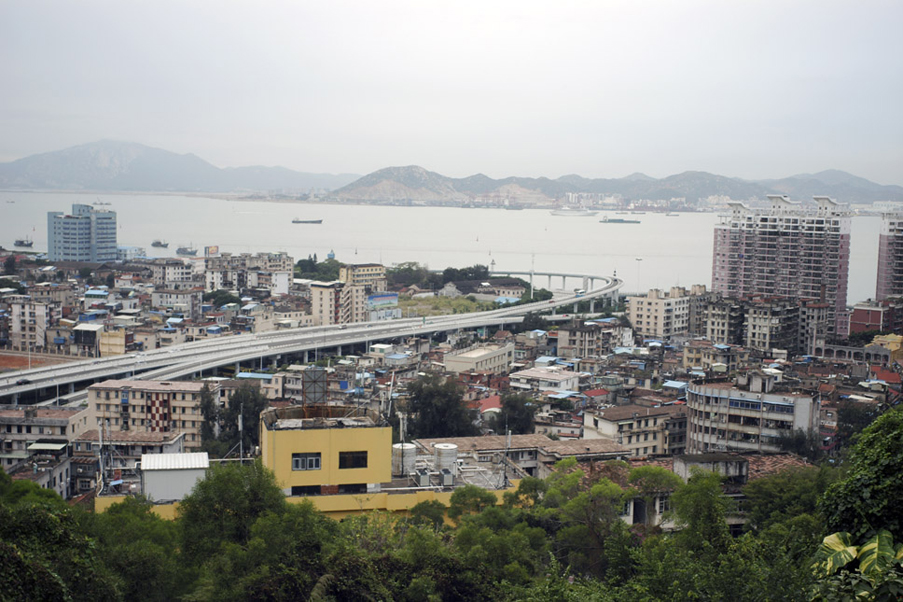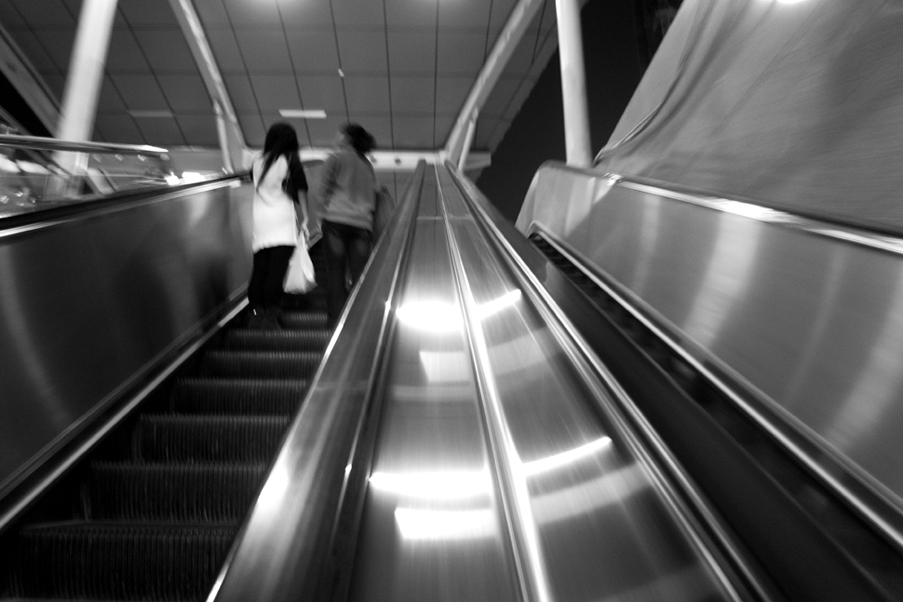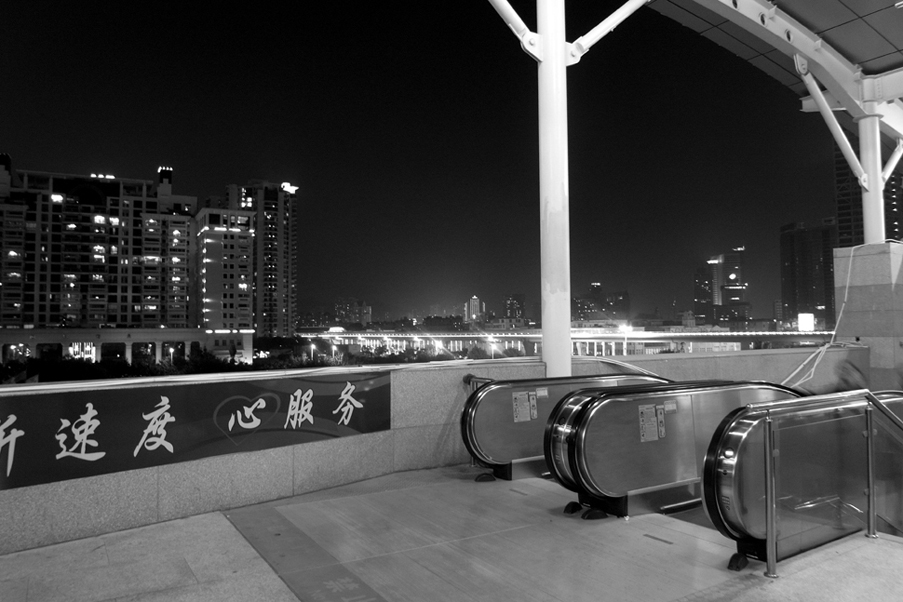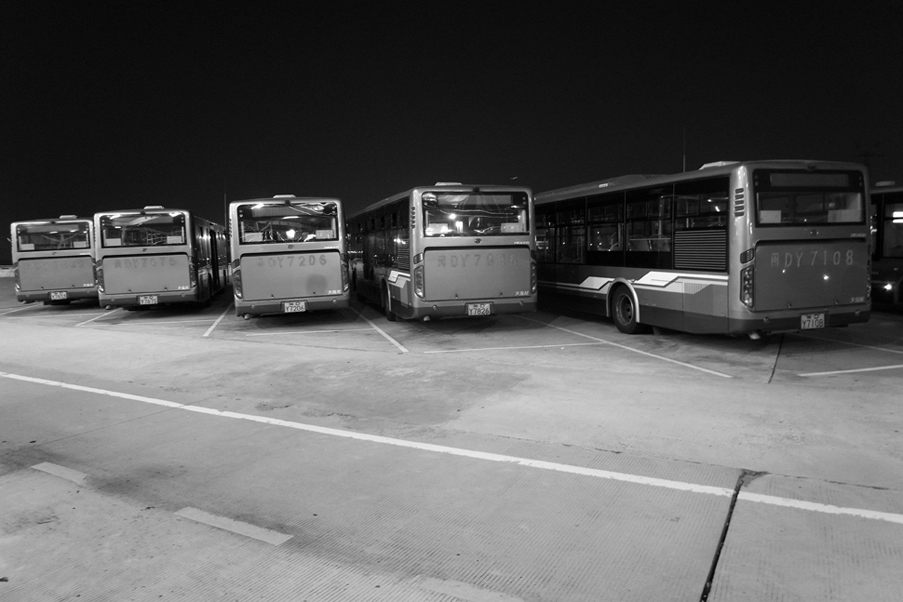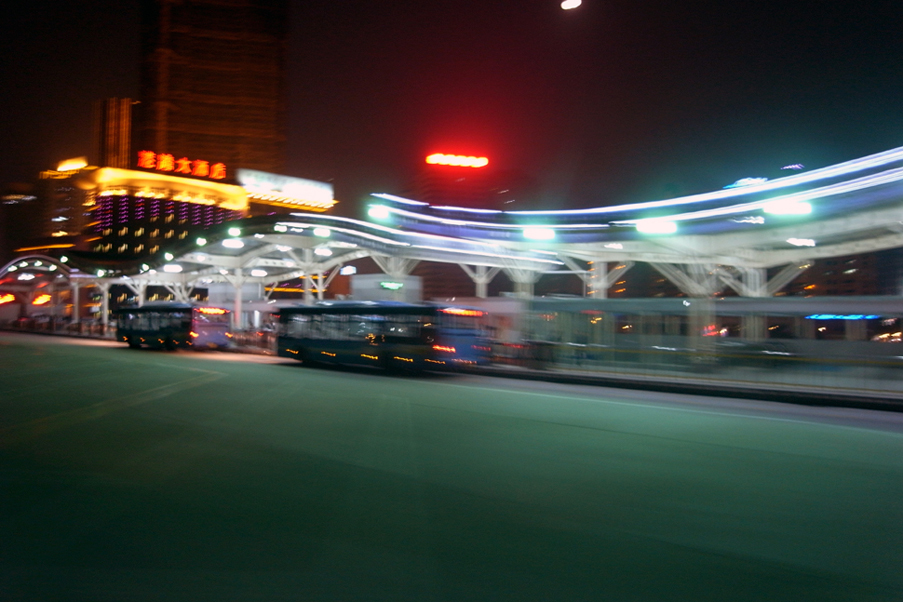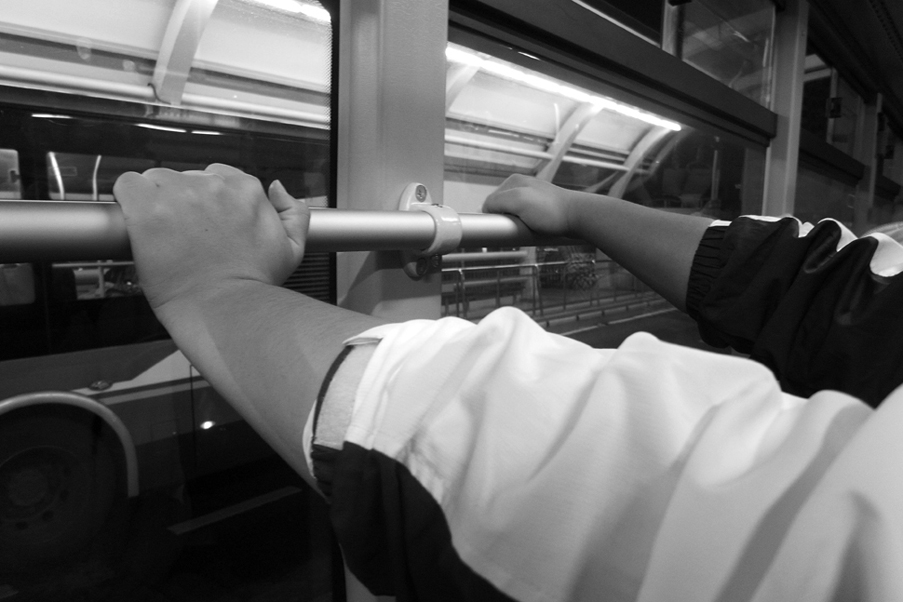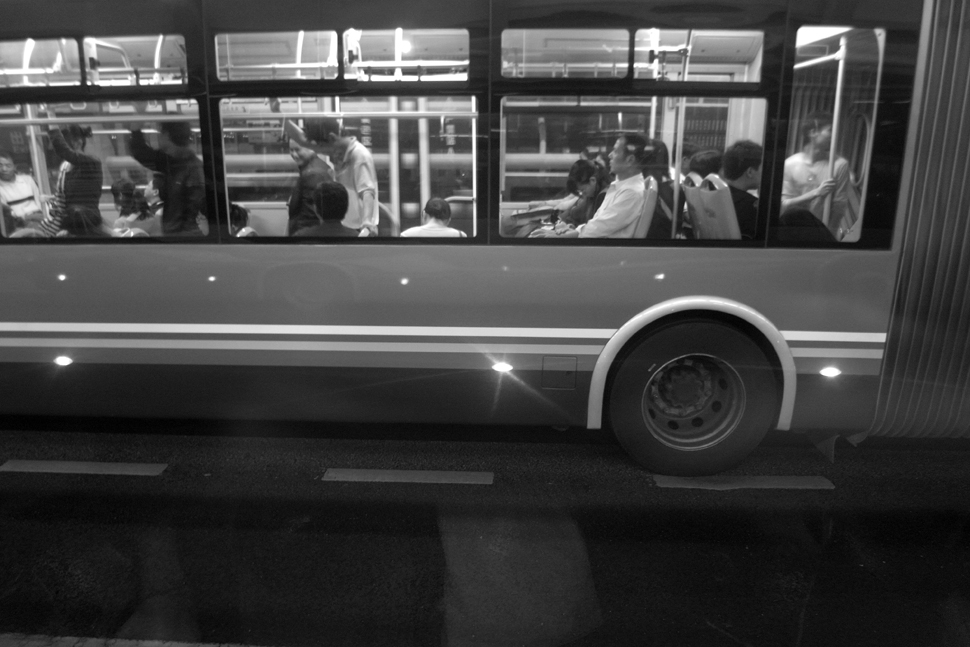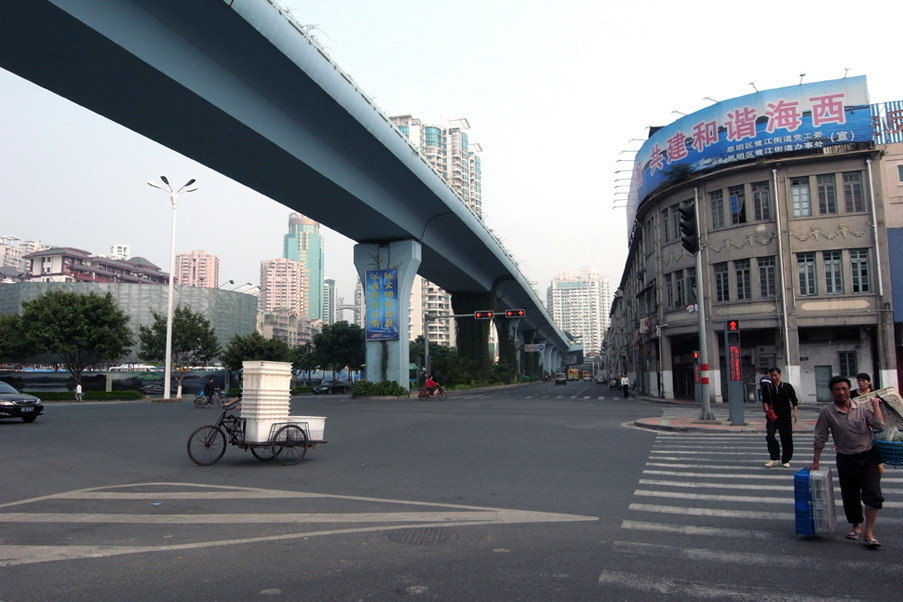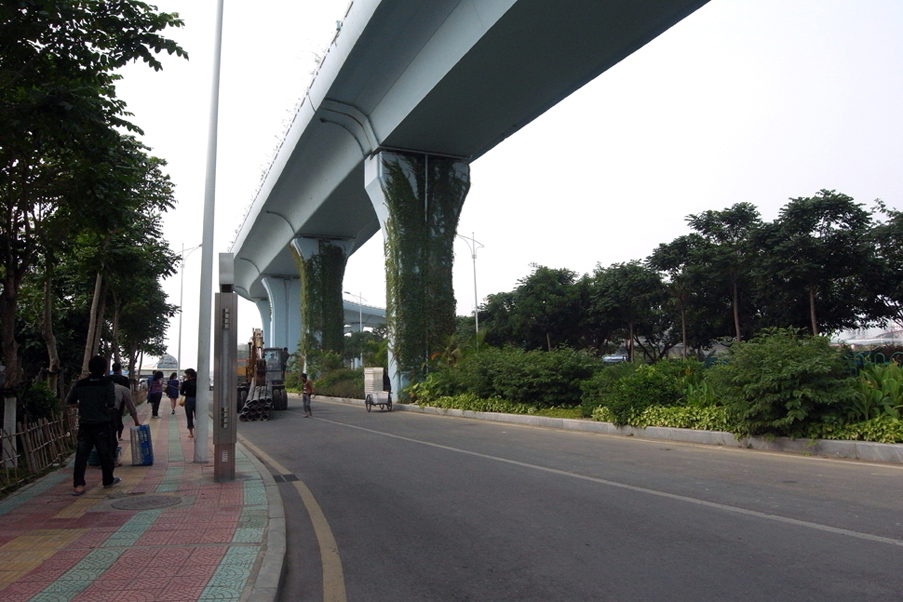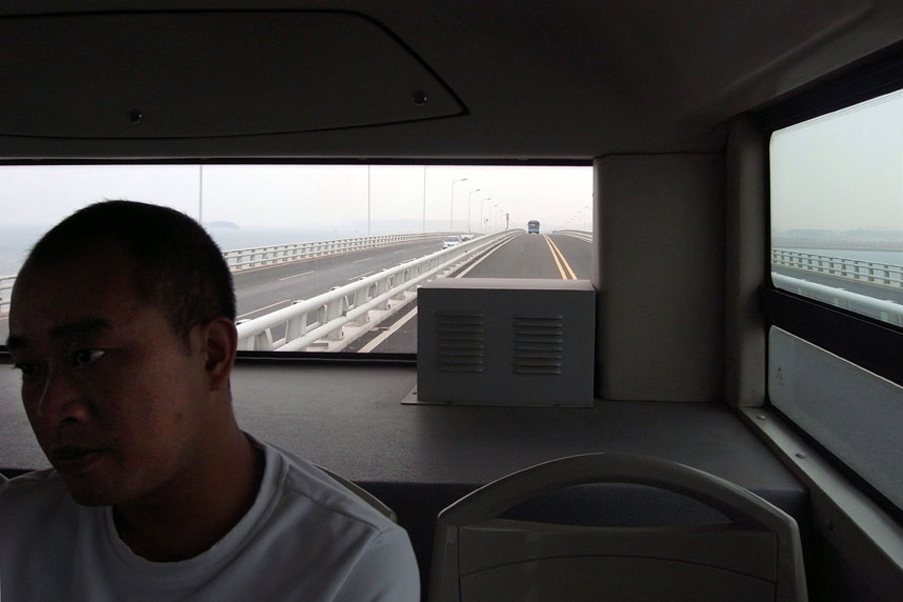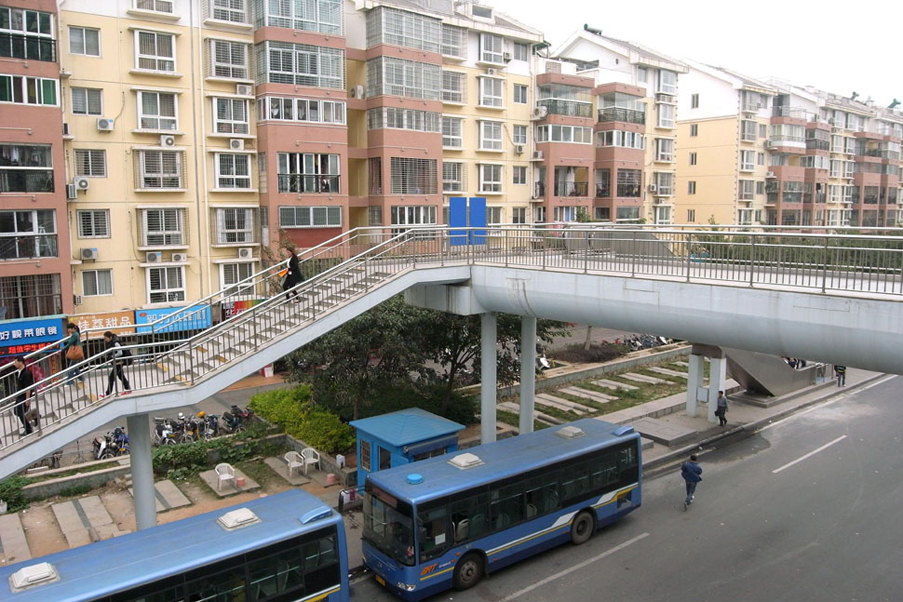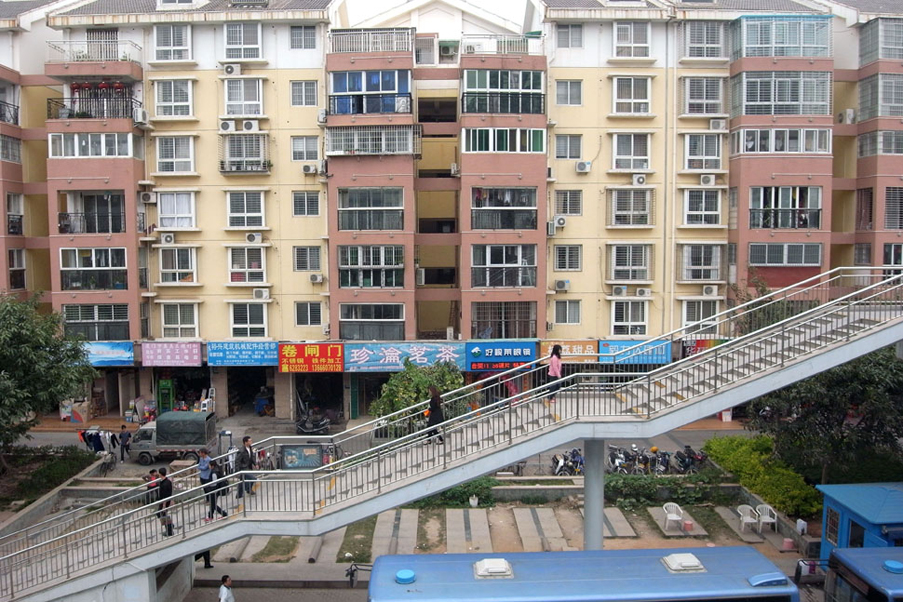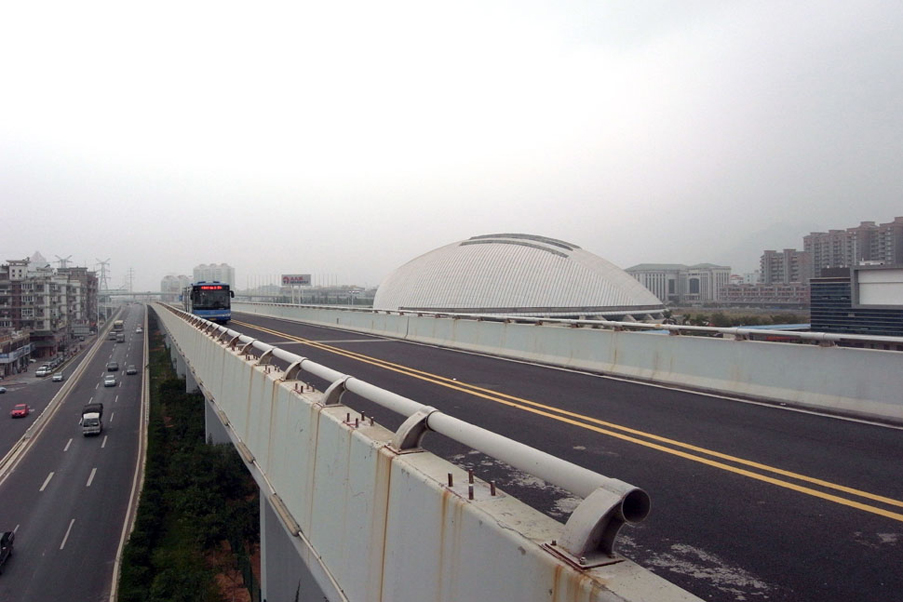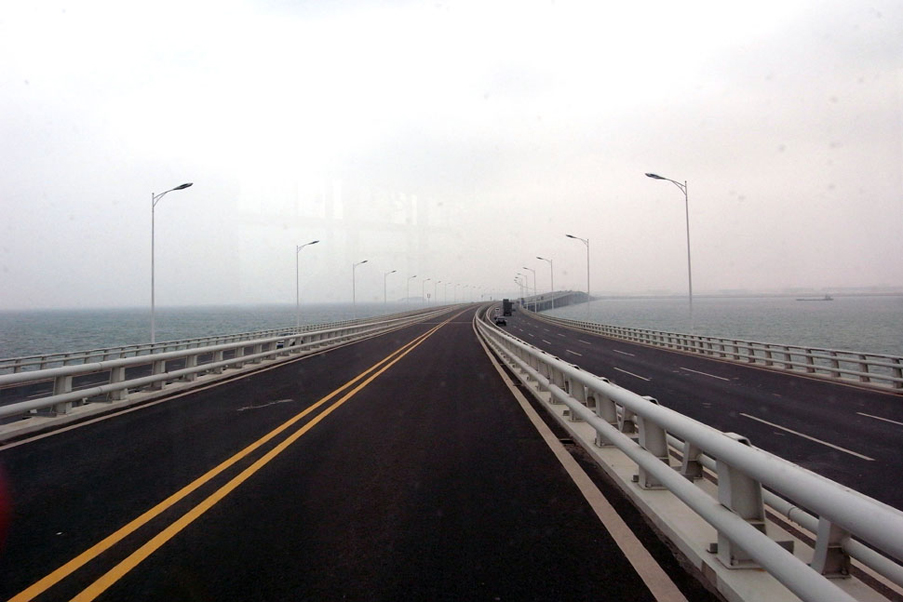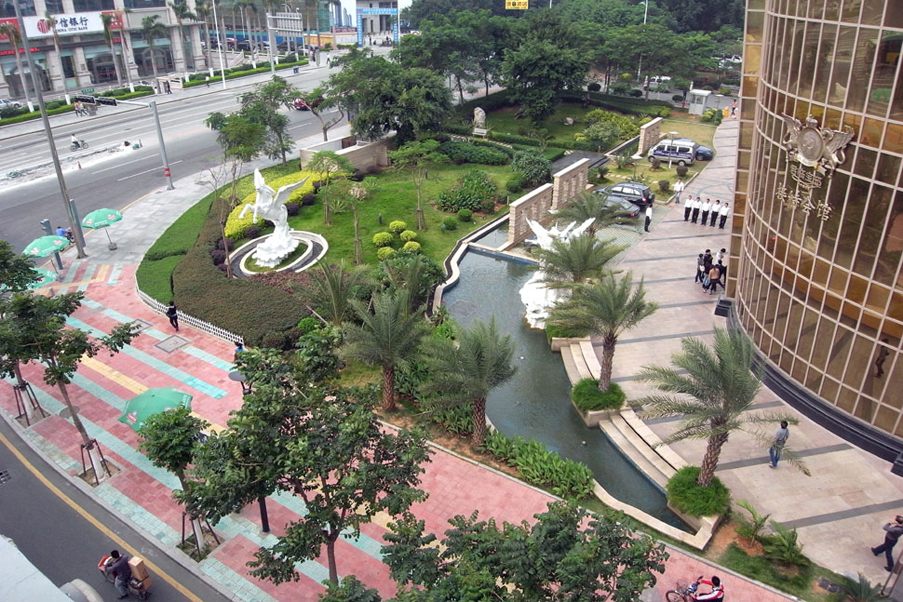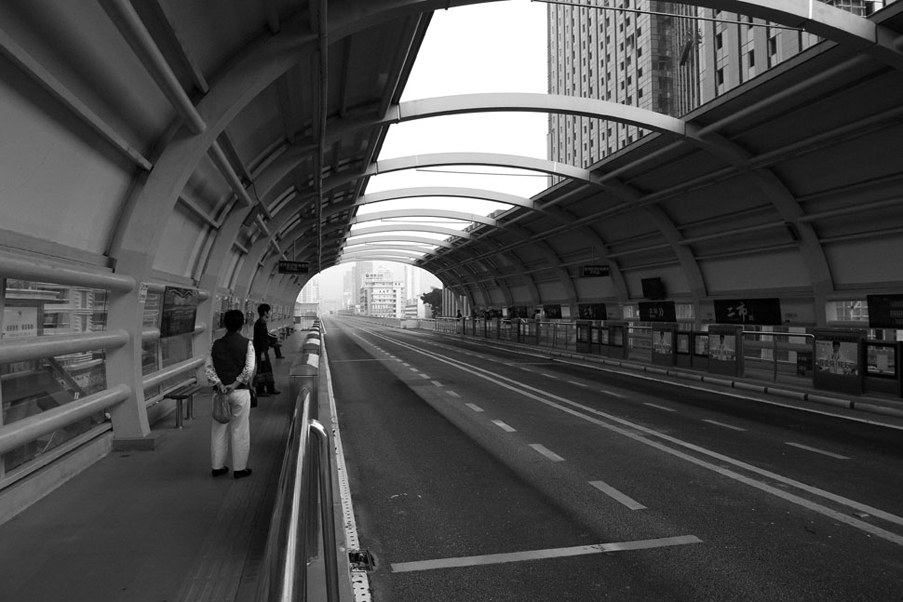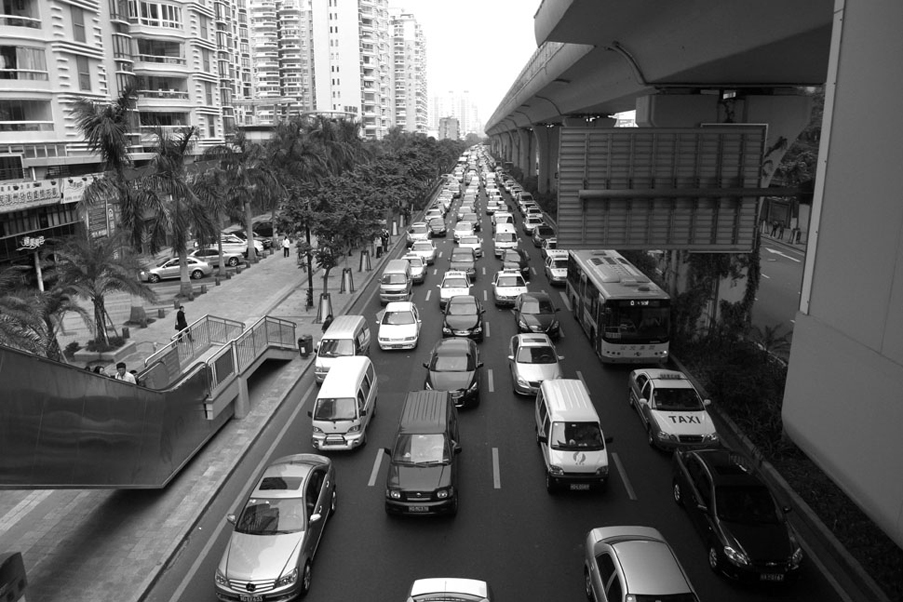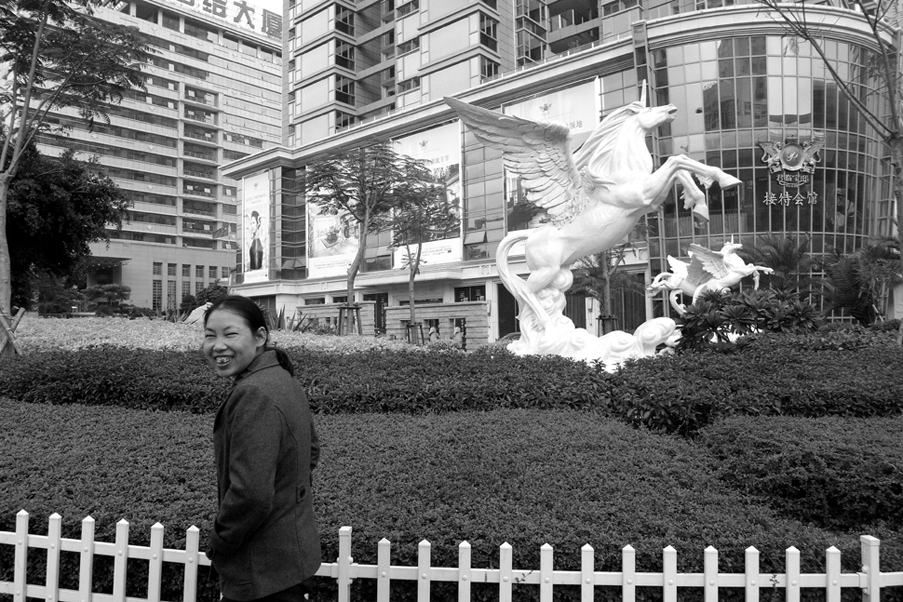On the ramp, Xiamen
The island city of Xiamen (Fujian) is reputedly one of the greenest cities in China. Most recently, the city made headlines as citizens fiercely mobilized to protest the establishment of polluting industrial factories in its urban core, successfully curtailing construction. The heart of the city is dotted with hilly parks and streets plunging towards the sea, the picturesque urban landscape certainly making it a Chinese city worth visiting. Its coast is peppered with islands, among which Gulangyu is the most famous. This provides many opportunities for seafront outings, made all the more convenient as the highway stretches along almost the entire shoreline, making the sea accessible within a few short minutes from almost anywhere.This natural location gives the impression that it remains possible to successfully balance a dense city with nature.
I do not know if the geomorphological conditions of the city-lagoon have determined the public transport mode, but travel is mostly “on stilts”. While walking the streets of the old town, surrounded by colonial architecture, I learned that the highway line that meanders above our heads, the one that splits the city into two, is built for a separate bus system intended to serve the urban center of the island as well as the northern outskirts of the city. It does not take me long to pull myself up on the ramp and leisurely drift. As I idly stroll across the urban terrain towards sullen suburbs, I cast my eyes over the sometimes dense, sometimes remote and empty city, surfing on bridges whipped by tides, in empty or crowded buses. The BRT (Bus Rapid Transit) navigates alone and free above the dense daily flow of vehicles.
Designed based on the concept of the “Radiation+Ring” and with a mainly north-south orientation, the BRT connects the historic center, residential and industrial coastal suburbs, the airport, and Xiamen’s new railway station (Xiamen Beizhan) with about 115 km of lines. The “4+1” system defines the urban network. Four lines depart from the island and circulate around it: the first, Line 1; the second, Chenggong dadao; the third, an insular-circular line; and the fourth, Lianxixian. The last line, Line 2, however runs only on the northeast of the mainland. The highway is huge and recognizable by its reinforced concrete, painted in asky-blue color, appearing at the corners of the center’s busy streets.
During my journeys through both the day and the night, the ambivalent experience of the true-false passenger generated some personal reflection. A priori, the true passenger wants to travel from one point to another as fast as possible, without waiting too long for the train or bus, avoiding idle standing, making the right changes, constantly aware of not missing his stop, etc. In short, the journey will inevitably lead to potential stress for this traveller. The false passenger is hungry for a new experience that will allow him to enjoy the view offered from the ramp via a local mode of transport, urging him to take his time if possible.
The multiple facets of the places visited are revealed at random or by chance throughout the journey, with no other guide than the driver of the vehicle who I have no other choice but to trust. From high up, I see the city as a landscape unfolding in front of me; and it is this imposing highway, this “object” that allows me to appreciate the landscape, to experience a certain continuity of the urban space. I experience the instrument of transport as total entertainment—was this not also the case at the beginning of the automotive era? The connections between these two worlds appear very thin in the context of public transport, but Xiamen’s BTR system seems to offer this possibility. Passengers are quickly transported from point A to point B, which is consistent with one’s primary needs; they may at the same time take a “landscaped” journey, wherein distant views and multiple details offer him new everyday discoveries – a poster, a new building far away, a young couple on the platform of the Ferris wheel, the tidal cycles…
-
2012/02/10

-
Xiamen

-
Jérémie Descamps


the other map
Explore arrow
arrow
loading map - please wait...

